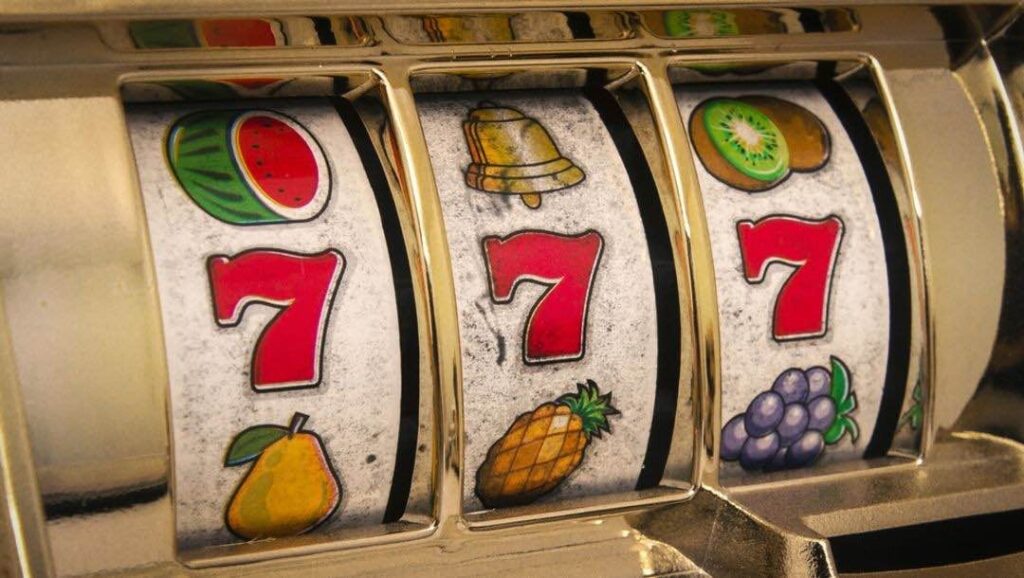Origin of Slot Machines
The original slot machines dating back to the late 19th century featured numbers and symbols from the card deck, resembling poker more than the modern versions. Charles Fey’s Liberty Bell, invented in 1895, was among the first mechanical slot machines, incorporating horseshoes, diamonds, spades, hearts, and a cracked Liberty Bell as symbols.
Transition to Fruit Symbols
During the early 1900s, a wave of anti-gambling legislation swept across the United States as concerns grew over the financial toll that slot machines, also known as one-arm bandits, were taking on individuals’ savings. In response, manufacturers modified slot machines, moving away from the poker-inspired visuals seen in Charles Fey’s Liberty Bell to incorporate fruit symbols. These fruity icons dispensed chewing gum as rewards when players achieved a match along the slot payline.
Bell-Fruit Gum Company Influence
In 1913, as a strategy to rebrand after previous instances of heavy rigging, the Bell-Fruit Gum Company opted for innocent and vibrant fruit imagery reminiscent of childhood games to ensure rewards and treats. During this period, slot machines commonly dispensed cherry, banana, and pineapple-flavored treats. However, the rewards quickly diversified based on the availability and preference of the machine owner.
O. D. Jennings and Innovation
The driving force behind this innovative approach was O. D. Jennings, the visionary behind the Industry Novelty Company. By transforming slot machines into gamified chewing gum dispensers, they found their way into convenience stores, effectively bypassing gambling laws and sparking a wave of new inventions in slot machine technology. With no patents restricting their development, slot machines evolved rapidly, offering larger payouts and captivating players with their newfound gamified allure.

The Role of Random Number Generators (RNG)
Top-tier online casinos prioritize fair play by implementing a random number generator (RNG), a legal requirement. This computer algorithm ensures randomness in both fruit slots and traditional slots, capable of performing numerous calculations per second. The RNG generates sequences of numbers that correspond to reel symbols, ultimately determining whether a player receives a payout. Each symbol carries a different weight, influencing its likelihood of appearing; for instance, lower-weighted symbols may be more common than higher-weighted ones, such as bonus or free spin symbols. To uphold fairness, gaming operators often subject their RNG to regular audits by independent third parties.
Fruit Slots in Britain
From the 1950s to the 1980s, vibrant and whimsical fruit slot machines captivated audiences with their colorful designs and engaging gameplay. Players were drawn to these machines by their lively visuals, captivating sounds, and the promise of rewards for matching fruit symbols. Despite their appearance, fruit slots are technically distinct from conventional slot machines in that they incorporate an element of skill alongside luck-based mechanics. In the UK, gaming regulations mandated that fruit machines incorporate elements of skill to remain compliant with the law. This unique 90jili requirement led to the introduction of features like ‘hold’ and ‘nudge’ in slot machines.
Hold and Nudge Features
The ‘hold’ feature allows players to manipulate individual reels that are not fixed, giving them a chance to improve their outcome through strategic decision-making. Meanwhile, ‘nudge’ enables players to adjust a reel up or down by one position, in the hopes of achieving a more favorable alignment of symbols. These additions introduced an interactive dimension to fruit machines, enhancing player engagement and 90jili adding an element of strategy to the gameplay experience.
Evolution of Modern Fruit Slots
The straightforward nature of fruit symbols imposes constraints on the evolving complexity of modern technology. Lemons and cherries, with their distinct flavors, evoke sensations on the taste buds and evoke nostalgic memories of sweets, serving as psychological triggers for players to anticipate rewards. It’s common to associate these fruit symbols with gambling, as they frequently feature prominently in gambling advertisements. Games like Wazdan’s Fruity Fiesta have evolved to offer larger jackpots and more bonus rounds, blending the retro charm and nostalgia of fruit machines with contemporary gaming elements.
Challenges in Maintaining Engagement
However, beyond traditional venues like brick-and-mortar casinos, gaming arcades, or classic British pubs, fruit slot machines face challenges in maintaining player engagement compared to games leveraging advanced technology for immersive experiences. Video slot reels, for instance, are not bound by the limitations of classic fruit slots and offer a wider array of betting options, enhancing player interaction and variety. Despite this, the nostalgic appeal and simple mechanics of fruit slots continue to draw in a dedicated audience, ensuring their place in the 90jili gaming world.
Conclusion
The colorful rebranding of fruit slots shed light on the shadowy history of significant rigging in the industry. Today, the implementation of RNG algorithms and the oversight of independent auditors ensure fairness and impartiality within the game, fostering trust among players. From the initial poker-inspired machines to the vibrant fruit symbols and the introduction of skill-based features, the evolution of slot machines reflects a continuous effort to adapt and innovate in response to changing regulations and player preferences.

